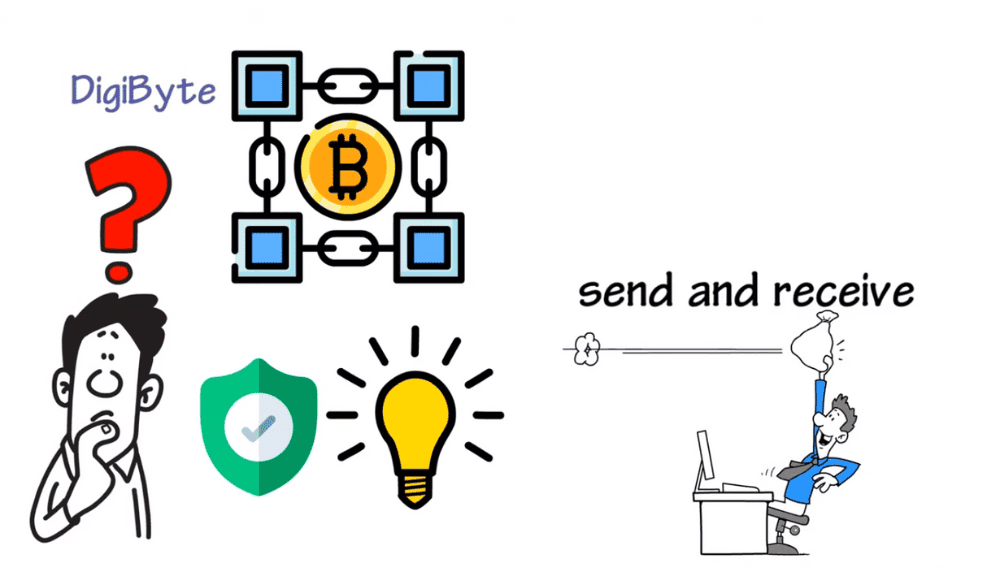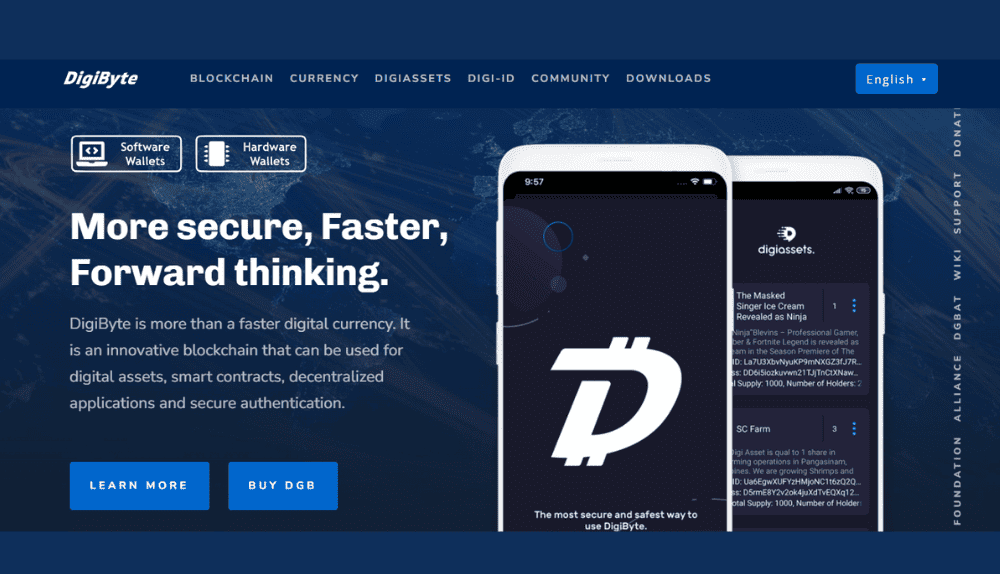A Beginner’s Guide to DigiByte (DGB)
Key Notes: –
- DigiByte is a peer-to-peer blockchain network that offers a fast, secure, and decentralized platform for transaction processing.
- DigiByte uses five different mining algorithms to avoid the 51% attack risk.
- DigiByte uses a modified version of the Proof-of-Work consensus mechanism to validate transactions.
The primary goal of each blockchain network is to prevent the centralized controls of the entities and transfer complete control to the community members. Most blockchain networks are using Proof-of-Work and Proof-of-Stake consensus mechanisms to ensure a decentralized environment.
But these networks are using only one consensus mechanism to secure the network. It has now created the problem of mining centralization. So, if a group of people managed to set up a particular amount of mining rigs, they can control most operations of that particular network. The same is the problem with PoS networks because the users need to stake a significant amount of native tokens to become a validator.
So, if a group of people purchased a high amount of tokens from the blockchain network, they can manipulate the entire network according to their needs. So, the industry is in need of a network that can solve this problem. Fortunately, DigiByte is a reputable blockchain network that is addressing this problem with its five mining algorithms for more than 8 years.
What is DigiByte?
DigiByte is a peer-to-peer blockchain network dedicated to providing a fast and secure platform for transaction processing. The platform can process around 1,066 transactions per second and has significantly low gas fees compared to other networks.

DigiByte primarily uses the Proof-of-Work consensus mechanism for validating transactions. It means the miners need to solve complex mathematical problems to add new blocks to the network.
So, the basic structure is pretty much similar to Bitcoin. But Digibyte incorporates five different mining algorithms to avoid the 51% attack risk because the attackers will have to control 50% of the hash rate of all mining algorithms to achieve their goals.
- SHA-256 – SHA-256 is used by Bitcoin and several other blockchain networks to mine new tokens.
- Scrypt – Scrypt was introduced by Litecoin developers to address the vulnerabilities found in the SHA-256. Thus, it’s more ASIC-resistant compared to SHA-256.
- Groestl – Although Scrypt was better than SHA-256, it still had some problems that could risk the security of the network. Therefore, the developers felt the need for a more ASIC-resistant algorithm that could prevent those issues. This newly launched algorithm is now used for Monero and other blockchain networks.
- Skein – Except for the hashing function, Skein shares most of its features with Groestl.
- Qubit – GPU mining consumes a lot of energy. Therefore, the developers introduced Qubit, a mining algorithm, to improve the efficiency of these systems.
DigiByte offers a more secure and decentralized environment with its five different mining algorithms. The platform protects itself from malicious attacks with the “most advanced difficulty stability”.
DigiByte also supports decentralized applications, smart contracts, and programmable tokens. It’s worth noting that Digibyte consists of three different layers. The top layer manages the DApps and smart contracts while the middle layer handles the public ledger. The bottom layer is the most important part of the network as it establishes a secure connection between devices that are running on the network.
DigiByte Brief History
DigiByte was introduced by Jared Tate in 2014. A group of volunteers contributed to developing this project over time. DigiByte activated Segwit in April 2017 and became the first major altcoin to do so. DigiAssets was launched in March 2019. DigiFlame and DigiTorch are the first two DigiAssets launched by Jared Tate.
The Digibyte Foundation, a non-profit organization, was launched in February 2020 and is responsible for the development and marketing of the project. DigiByte also has an awareness team that handles social media and press releases.
DigiByte team gave away 0.25% of the total supply to its early users while the 0.25% was reserved for the project’s development.
How Does DigiByte Work?
DigiByte network is mainly used to transfer DGB tokens from one account to another. The network also offers a custom suite of smart contracts that can be used to build different kinds of decentralized applications. DigiByte uses a modified version of the Proof-of-Work consensus mechanism to validate transactions.

The node operators need to install DigiByte’s software on their computers to start minting DGB tokens by validating transactions. Unlike Bitcoin, Digibyte encourages more users to participate in the network’s security by allowing them to use consumer-grade hardware for transaction processing.
DigiByte uses a multi-layer protocol to achieve its ambitious vision.
Application Layer – This layer deals with smart contracts and decentralized applications and allows users to purchase different services and products using DGB tokens.
Consensus Layer – This layer keeps a record of all the transactions processed using this network. The miners can also handle the release of new DGB tokens using this layer.
Network Layer – It’s the core layer that is designed to connect the devices with each other.
DigiAssets and Digi-id
As discussed earlier, DigiByte introduced the concept of Digibytes in 2019 which allows developers to create customizable digital assets. These assets can represent legal documents, traditional financial assets, or other valuables.
Digi-ID is an authentication system that is designed for applications that need usernames and passwords to provide access to their services. Digi-ID protects the user’s personal information while allowing them to verify their identity through cryptographic data.
DigiByte Tokenomics
DGB is the native token of the Digibyte network that users can use as a transfer of value. With a circulating supply of 16.2 billion tokens, DigiByte has a market cap of $107.6 million. It ranks among the 200 best cryptocurrencies in terms of market cap.
Conclusion
DigiByte is a fast, secure, and decentralized blockchain network that offers a variety of features, including decentralized applications, smart contracts, and programmable tokens. With its five different mining algorithms, DigiByte is well-protected from malicious attacks and offers a more decentralized environment than other blockchain networks. DigiByte is a promising project with a bright future.
Feel free to get in touch with us if you need more information about how the DigiByte network works. We also invite you to subscribe to our weekly newsletter if you need regular updates about Bitcoin and the crypto market.











